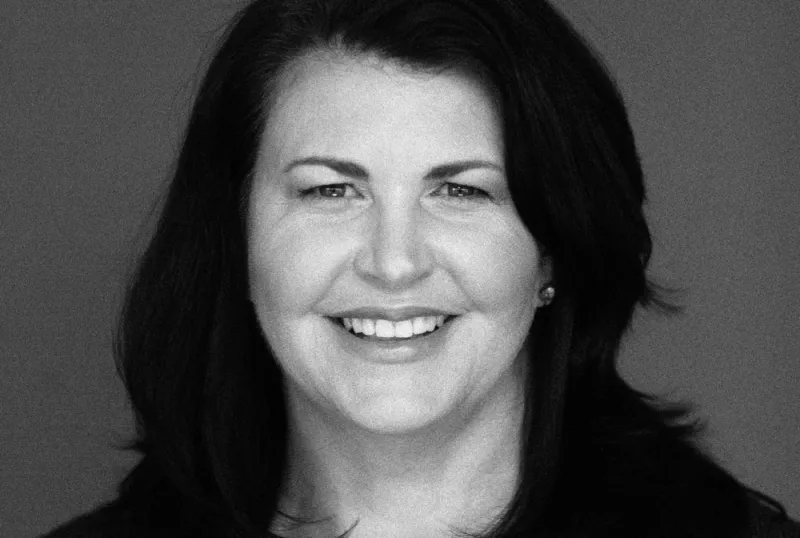While many advisors enter the business as part of a mid-career change, Carolyn Armitage wasted no time getting started. She began building up a client base while still in college. By the time she was 23, she was a branch manager. “Helping people and problem-solving was in my blood at an early age. It’s my passion,” she says.
And within a decade, she was heading up entire divisions at national firms. For example, she played a pivotal role in building out the H.D. Vest platform in the early ‘90s. Armitage went on to spearhead a turnaround and consolidation at the U.S. advisory arm of Dutch Bank ING and headed up the large enterprise consulting business at LPL Financial.
Along the way, Armitage gained valuable insight as to why some advisory firms flounder, some plateau and some soar. At LPL, she helped clients understand a wide range of KPIs (Key Performance Indicators) that are the drivers of value for their firm.
Armitage, with her wealth of industry insights and expertise, joined Echelon Partners in 2017 to serve as a Managing Director. Echelon is one of the RIA industry’s leading providers of investment banking, succession planning, compensation and equity design, consulting, valuation, expert witness. board advisory, and industry research.
We had a chance to catch up with Ms. Armitage and ask about the current state of affairs in the RIA industry. Here’s an abridged version of that conversation.
Tell us about your client base.
Our target market is an RIA with over $1 billion in assets and we also work with small to mid-sized broker/dealers and hybrid firms, as well as provide consulting support to Super OSJs (the supervisory officers at firms that oversee local and regional OSJs). Think of us as the advisors’ advisor. We provide fresh perspectives and financial modeling and guidance for advisors to make better informed decisions.
Echelon’s just-released 2019 RIA M&A Deal Report points to a stepped up pace of activity in Echelon’s target market. The report notes that deal-making rose for a seventh straight year, and the 203 transactions that were consummated were 12% above 2018 levels.
The Echelon Report points to a massive spike in deals for firms with managed assets of $1 billion or more, as 57 were completed in 2019 compared to 32 such deals in 2018. How do such deals differ from smaller deals in how they are put together and executed?
When assets surpass $1 billion, business operations are much more complex. You’re often dealing with larger teams and numerous leaders who may have been accustomed to sole control and must now learn to share decision-making, or perhaps even take a backseat to the acquiring firm’s leadership. These kinds of firms tend to seek out our advice with the various services we offer.
The Echelon M&A Deal Report sheds light on why deal-making is heating up among larger firms. “Most firms with $1 billion in AUM (Assets under Management) possess the ideal mix of size and development as they often have more infrastructure, systems, management, protective redundancy, and financial wherewithal.” The report also noted that the average deal size was a record $1.477 billion, up 16% from 2008 levels. Triple the average deal size seen back in 2013.
You noted that you also sometimes work with firms that have a few hundred million in assets. They presumably face a different set of industry dynamics when it comes to M&A. How do those clients approach an exit strategy?
Ideally, they start working with us five years before they’re ready to retire. That provides them time to optimize their business, which can help ensure they get the best valuation for their firms.
What’s the greatest concern for sellers as they contemplate a transaction?
Over nine of out 10 advisors want deep assurances that their clients will be well taken care at least at the same level or better in the future. They’ve been with these clients for decades through all kinds of life events and ensuring clients’ future well-being is even more important than discussions about their own retirement. For sellers that plan to keep working after the deal is consummated, it can be hard to imagine working for someone else. We help them navigate that process and structure the deal so that it aligns with the best use of their skills and desires in a new environment.
Why would firms want to work with a banking consultant like Echelon, rather than directly solicit any M&A interest from potential buyers?
We maintain a large database of the industry and their offerings and deal structures in the marketplace. Therefore, we know which firms and deal structures will work best for the seller to eliminate time-wasting, competitive information-taking, tire-kickers, and avoid them being taken advantage of by professional buyers; who may suggest to the seller that they don’t need to spend all that money on an investment banker, and that they’ll take good care of the seller and keep that money as a part of the deal. When in reality, professional buyers don’t want sellers to be represented by a banker so that the favorable economics of the deal remain with the buyer and not shared as they should be.
The Echelon Deal Report notes that the extended bull market, and its inevitable eventual end, is driving some of the M&A activity. “Given that it usually takes at least a year to consummate a deal, trying to time the market with the sale of your company can prove extremely difficult. Still, advisors are attempting to factor in market cycles in timing their exit strategies. With the U.S. economy in the eleventh year of an expansion, the longest on record, we expect to see continued interest in the M&A process and upward pressure on deal activity,” the report notes.
Echelon’s 2019 Deal Report highlights a crescendo of deal-making in recent years and valuations are certainly robust as well. Of course, a longstanding bull market provides a healthy backdrop. Should we assume that the next bear market will crash the party?
Current multiples of Ebitda are reasonable given the attractive profit margins of the wealth management marketplace. When the market declines, revenues often decline (unless one is adept at organic growth) and if there are not commensurate expense-cutting initiatives, profits will decline, too. Since valuations are dependent upon multiples of Ebitda, one would expect valuations to reflect the downturn as well.
Should we assume that the next bear market will cause a great deal of strain for the industry, as we saw in 2008?
Back then we saw a lot of new industry entrants that were simply unprepared for a downturn. However, the industry has matured, advanced and learned from that drop and most firms have made smart investments in technology, systems and personnel that enable them to operate more efficiently today. Still, firms need to ask themselves if they could sustain a 20-30% drop in revenues and still make payroll. We help our clients model and prepare for those types of eventualities by pinpointing the right strategic actions to take now.
I would add that while a down market can create real strains, the best firms use that backdrop as a strategic advantage, poaching clients or acquiring discounted assets. I love the old Nick Murray adage that “bear markets return clients and their assets back to their rightful owners.” Advisors who have prepared their clients to expect market fluctuations and are proactive at marketing and attracting new clients during bear markets can gain new assets and clients from those Advisors who aren’t as proactive.
Let’s talk about industry M&A trends for a moment. These days, we’re hearing more about deals that were financed with loans. That seems to be providing more financial fuel for the M&A fire. What are you seeing with this trend?
With interest rates at historical lows, new lenders springing up almost weekly, and private equity taking an ever-larger interest in the wealth and asset management industries, the liquidity options are robust for those advisors who are seeking their own succession transaction. Historically low interest rates and historically high profit margins is a pretty magical intersection.
That sounds like a recipe for disaster in a downturn.
Debt levels are within boundaries and aren’t a concern when the deal is structured properly, if the buying process is very well thought out. However, poor deal structures and poor (post-deal) execution can cause real challenges when it comes to servicing the debt. Certain private equity buyers fully understand the complexities of the wealth and asset management industries. Those buyers who are somewhat new to the wealth management business may lack that full appreciation of the fluid regulatory environment, complexities of the various revenue streams, and lack the execution expertise needed to operate a wealth management firm.
There’s no question that private equity firms are helping to fuel the M&A landscape. The Echelon Deal Report notes that “within private equity, there is a new appreciation for the recurring revenue associated with the wealth management industry. Echelon has observed an increase in both direct and indirect private equity deals with deal volume increasing from 34 in 2017 to over 80 in 2019 (~235% increase). For reference, private equity capital backs some of the most aggressive consolidators and strategic buyers (Mercer Capital, Wealth Enhancement Group, and Allworth).”
A few months ago, we looked at the industry’s weak track record when it comes to hiring and compensating women. Have things changed since you first joined the industry?
It’s still a male-dominated industry, though much less so than in the past. There is now more support within online communities, women-only conferences and recognition of the tremendous dynamic women add. I think women are especially well-suited to the advice driven, financial planning profession where clients need the education and hand-holding to better navigate the complex choices they have regarding their financial futures.
Q: Thanks for taking the time to chat with us.
David Sterman, CFP, is President of New Paltz, NY-based Huguenot Financial Planning







